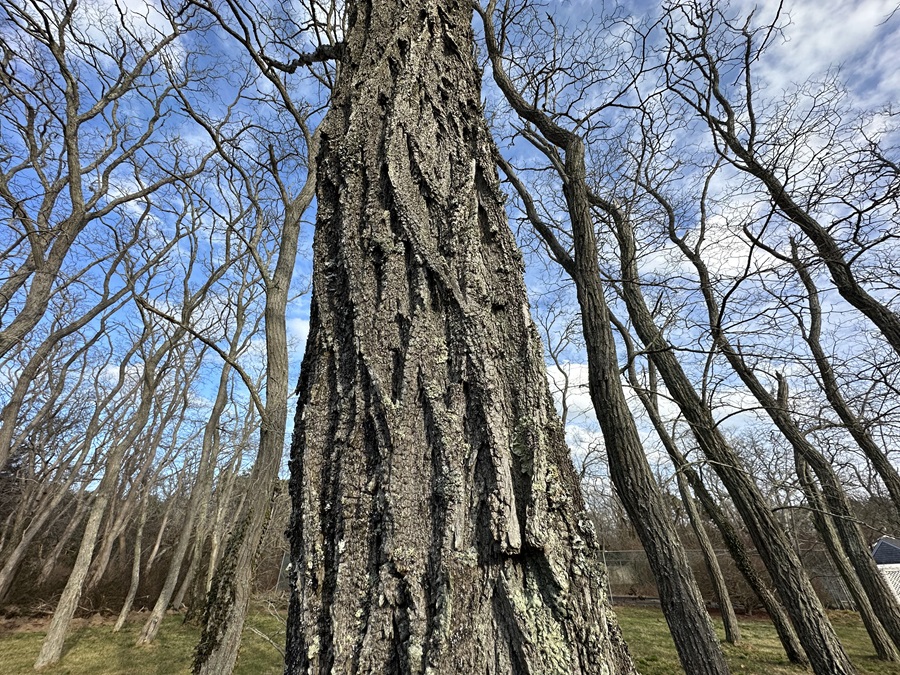
Once you learn to identify the black locust by its deeply furrowed, interlacing bark, you’ll start to see it everywhere on the Outer Cape — where there’s one, there are 20 more growing from the same root stock, as in the grove pictured here, near the intersection of Locust and Great Pond roads in Eastham. Its ability to fix nitrogen and skyrocket out of poor, sandy soil lets the black locust quickly shade out the native plant community. This is why Robinia pseudoacacia, originally from Appalachia, was declared invasive by the state of Massachusetts in 2005, though the white racemes of pea-like blooms and sweet fragrance in the spring might entice you to let yours stay, thorns and all. —Joe Beuerlein



